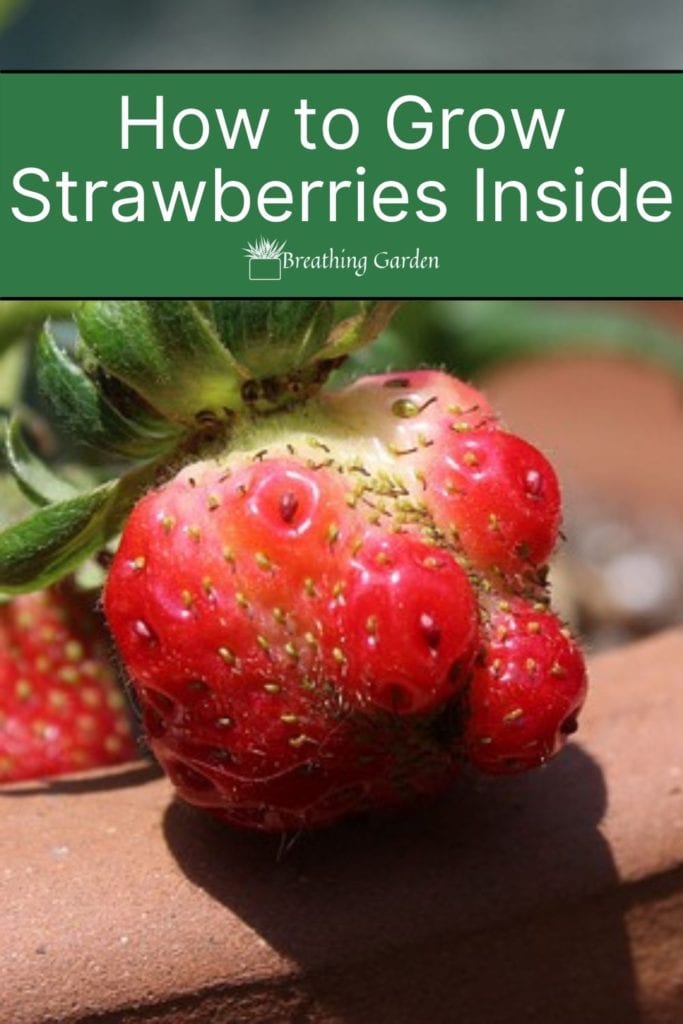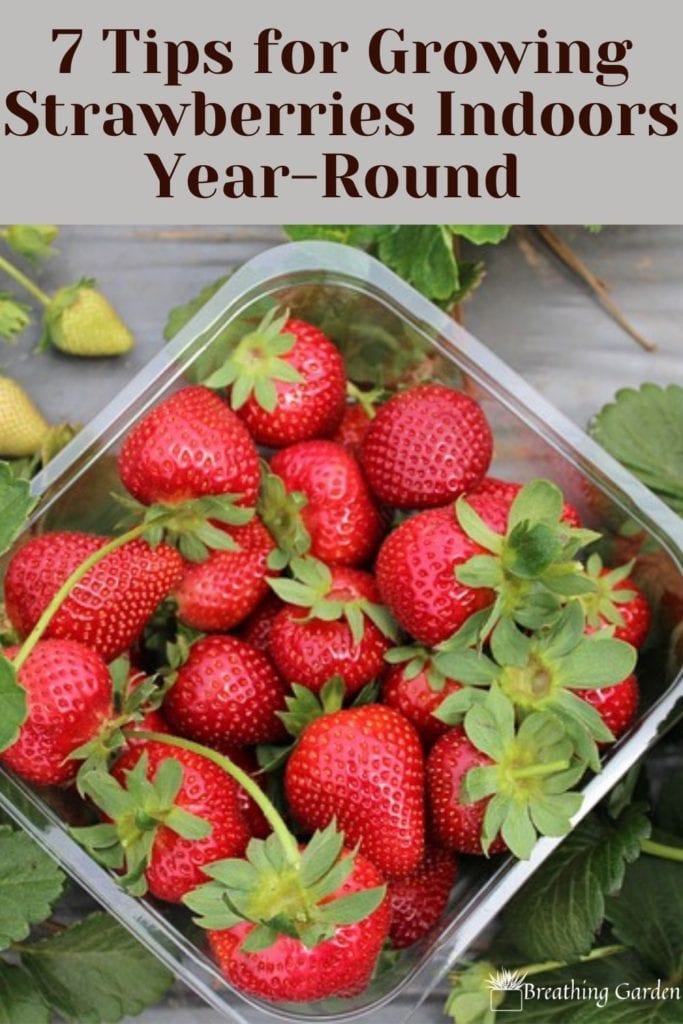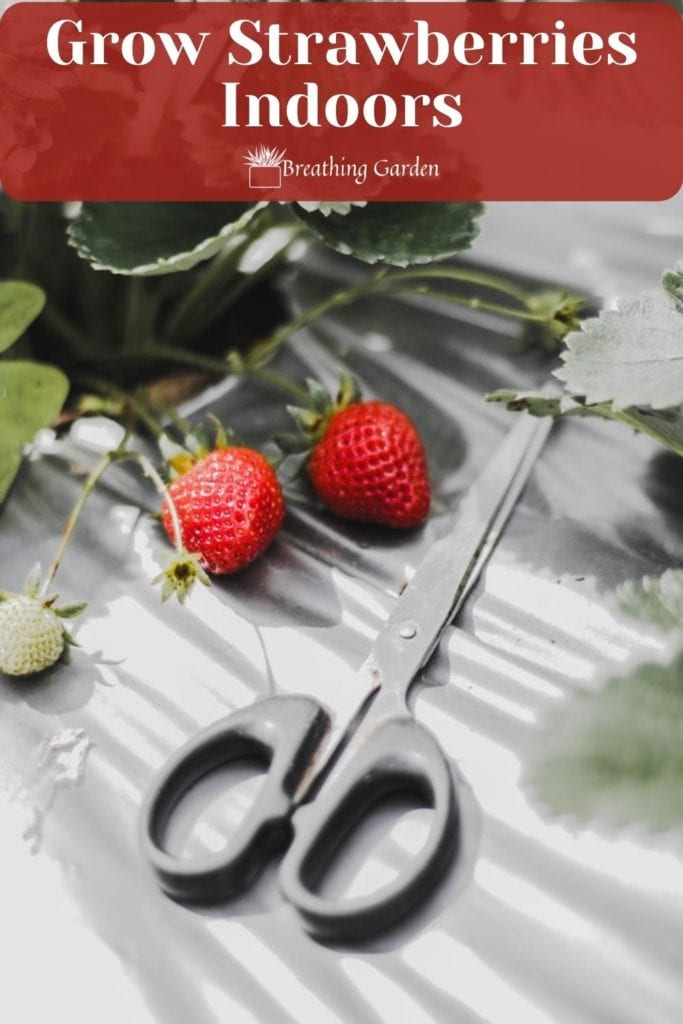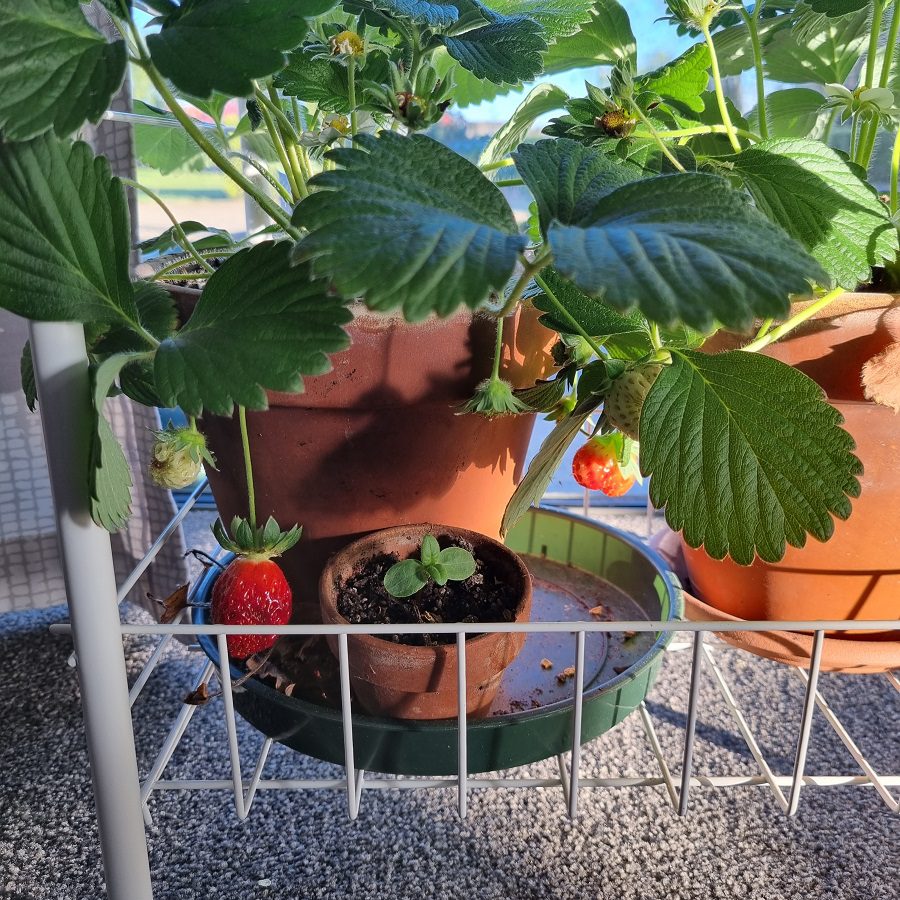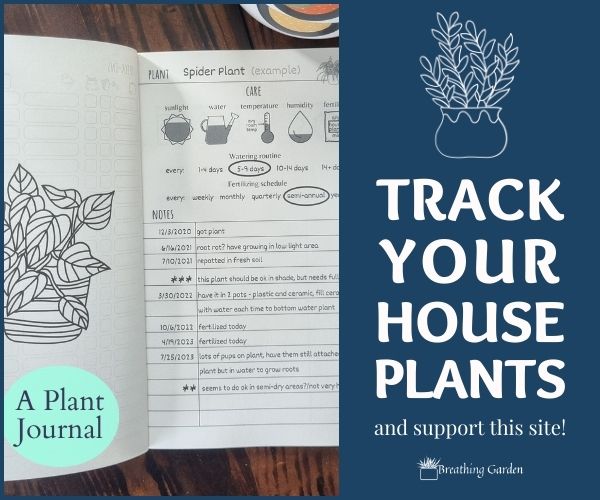Strawberry shortcake. Strawberries dipped in chocolate. Strawberries with champagne. Strawberries with cream, in salsa, in salads, as jam, or as the sweet half of strawberry rhubarb pie. There are a million and one ways to enjoy strawberries. Okay, maybe not quite that many, but if you’re a strawberry lover, you likely have a far longer list than this one. Which is perfect if you’re planning on growing strawberries indoors.
*This post may include affiliate links. When you purchase items from these links, we will receive a small commission, at no extra cost to you, to help support this website. Thank you for your support! Read more ->
Locally grown, fresh strawberries always taste best. This is great when it’s strawberry season in your neck of the woods, but not so much when the season is past.
If only there were a way to enjoy locally grown strawberries all year long.
Looking for strawberry companion plants? Find 6 plants to grow with strawberries here!
Growing Strawberries Indoors: Why Do It?

Once you know how to grow strawberries indoors, you can enjoy the benefits of this favorite treat year-round. A nutritious food, they are rich in vitamin C and antioxidants. They’re also a good source of manganese, potassium, and vitamin B9.
Beyond the nutritional value, growing any fruit or vegetable indoors allows you to control the light and temperature your plants receive. Growing indoors will also protect your harvest from berry-loving birds and animals, and give you a better shot at keeping slugs and other pests at bay.
Best of all, when you grow your own food, you know it is fresh, and you know where it came from. You never have to worry about whether or not the grower used pesticides or other chemicals during the growing process.
Choosing the Right Variety

Strawberries are perennial plants (they come back year after year), and there are actually three varieties with many cultivars.
The first and the variety that produces the largest berries overall are the June-bearing plants. These, as the name suggests, produce a single crop in the month of June.
The variety suggested for growing indoors are everbearing plants. These strawberry plants produce a crop usually twice a year and occasionally smaller amounts in between, and have fewer runners.
The third variety, known as day-neutral, produce strawberries throughout the entire season. However, this variety tends to produce berries that are fewer and smaller in size than June and everbearing plants.
Helpful Tips for Growing Strawberries Indoors

1. Before you put your baby plants in soil, remove the runners and trim away dead or dying leaves. Trim roots down to four to five inches and soak them in warm water for about an hour.
2. If space is a problem, consider growing your baby plants in hanging containers or tiered pots. There are a variety of space-saving options that are perfect for strawberries. Alpine strawberries are often a good choice as they tend to be more clump-forming. Read about a bunch of different strawberry planters here.
Hanging containers are a great idea for strawberries, just be sure to get a wide enough one like these 10 inch hanging baskets for the strawberries to thrive.
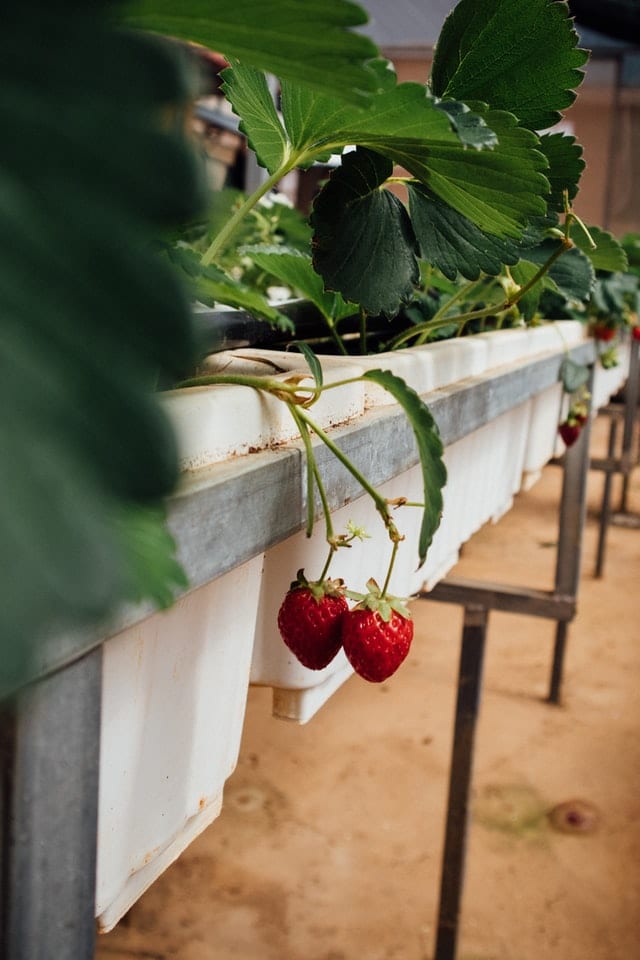
3. Use a well-draining soil with a slow-release, fertilizer with a 10-10-10 balance of nitrogen, phosphorous, and potassium.
4. If your plants are set in a sunny window, be sure to turn them regularly so all sides of your plants get good exposure to sunlight. If placing them in a sunny window is not an option, full-spectrum grow lights that provide lighting most similar to the natural sun are a good option. West facing windows are a great choice for strawberries to grow in.
5. Strawberries have a low tolerance for standing water, so don’t overwater. Also, be sure to aim for the bottoms of your plants and avoid splashing water on their leaves. Use a terracotta type pot so the water has a place to release if you are concerned about overwatering.
6. When your strawberry plants start to flower, pinch off these early blooms. This will enable your plants to put more energy into developing leaves and roots instead of fruit, which will produce a greater yield the following season.
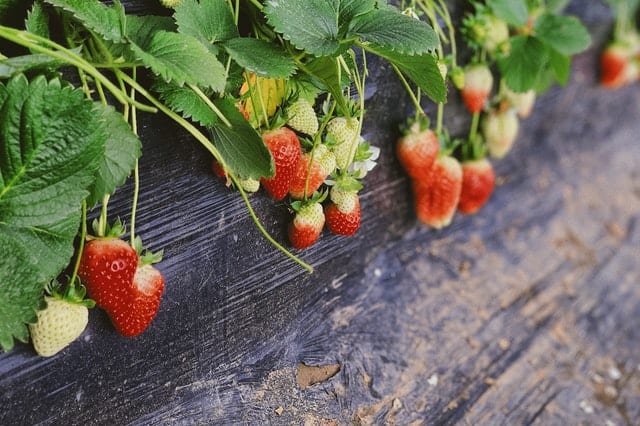
7. Avoid overcrowding your plants. When transplanting your seedlings, space them about 12 inches apart as the extra space will give them better protection from developing disease and mold.
Growing from Seeds
Growing strawberries indoors from seeds will take a little longer and a bit more patience, but, will also bear fruit.
You can purchase seed packets, or just as easily pick seeds gently from a ripe strawberry with a toothpick. Rinse the seeds to remove any fruit that clings to the seeds. Then dry them on a paper towel.
Outdoors, strawberry seeds require cold to germinate. That is, they have to go through a cold winter and thaw before they will start to sprout. This is because they wouldn’t want to sprout right before fall and winter.
You can fool them into believing winter has passed simply enough by sealing them in a zip-lock type plastic bag or tightly sealed container and storing them in your freezer for three to four weeks. After a month, take them out and leave them on the counter for a full day, but don’t open the bag or container.

If you purchase seeds, check to see if this is still required.
Once thawed, place three to four seeds in each cell of a seedling tray. You want to put 3 to 4 in each in case some of the seeds don’t germinate. Once they’ve germinated, remove all but the strongest one. Tip: just use cleaned egg shells with a bit of soil for the seedlings.
A good mix to start them in is three parts peat to one part organic-rich soil. Strawberry seeds need the sun to germinate, so don’t bury them. Instead drop them on top of the soil, lightly tap them down and provide them with a gentle mist of warm water. Then place them in a warm, sunny spot (or under a grow light if you don’t have much sunlight indoors).
Germination can take anywhere from one to six weeks, so be patient! Continue to monitor the soil to ensure it’s moist but not soaked and that they are getting the sunshine they need. Once seedlings develop several sets of leaves, you can transplant them to slightly larger containers, at least three inches apart. And once they grow to about three inches in height, you can transplant them again, but this time at about 12 inches apart to their final pot!
Just as with baby plants, pinch off the early blooms to have the best luck with your seed-started plants!
Strawberry Mojito Anyone?

Now, aren’t you glad you learned how to grow strawberries indoors? Get started right away producing your very own homegrown, sweet delicious fruit, a treat you can now enjoy any time of the year. And make a strawberry mojito with your strawberries and mint grown indoors!
Growing strawberries isn’t too difficult, and hopefully these tips will keep yours healthy and growing for many years!
Pin It!
Want to keep these plant ideas for later? Save them to Pinterest!
